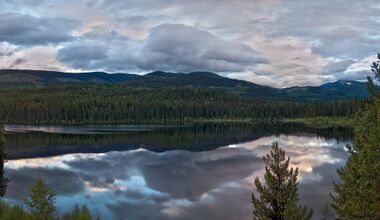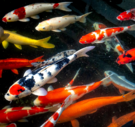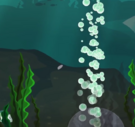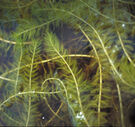
Our planet's fresh water resources are derived from two sources ground water and surface water. Usable fresh water amounts to less than 1% of the total water that resides on earth. It is the most precious resource we have, yet human kind continues to pollute it. Around the world governments and individuals are starting to realize that we no longer can take fresh water for granted.
Humankind needs to be more diligent in protecting its resource, that is crucial to plant and human survival. To make changes in our habits we must understand the life cycle of water and how it may be impacted from unpredictable weather derived from climate change and other human activities that interrupt the ecological balance of clean water.

Water is heated by the sun and evaporates from surface water as vapor, it also transpires from trees and plants. The vapor condenses in the atmosphere to develop cloud formations, at some point these clouds become heavy with moisture and precipitation is released. Precipitation falls as rain, hail, or snow, depending on the climate and temperature. When precipitation reaches the ground it percolates through the surface, saturating the soil, and becomes groundwater. When soil does not have the capacity to absorb the water, water accumulates on the surface and flows into rivers and ponds via drains or basins, some are man-made and others are naturally formed [1].
As climate change continues to make rain patterns more unpredictable, safeguarding ground and surface water to ensure minimal pollutants penetrate collection systems are becoming more and more important. There are no other more pronounced situations where this is happening then in India. A perfect example of pollution destroying fresh water resources to a point that it has now become a crisis in their country. For more information on the India water crisis Click Here.
Human activities in the home, industrial and agricultural settings produce waste that pollutes the atmosphere and ground and makes its way into our fresh water. Among some of the biggest pollutant threats to surface and ground water is the discharge that comes from plumbing, septic and sewage.

Waste from the home is flushed away into septic and sewage systems, where it is treated. In North America sewage treatment processes can filter water to return to the ecosystem clean and drinkable. However, many of the treatment chemicals used can be harmful to the environment. And unfortunately, due to underfunded municipalities and governments that aren’t focusing on sustainable water treatment, a lot of waste is returned to ground and surface water untreated. Older systems combine sewage and storm drainage and can easily overflow from heavy rainfall. Capacity is a continually growing problem with human population growth. Leaks, overflow, and treatment cells held in surface waters can all pollute ground water with raw sewage and treatment chemicals. For more information on improper sewage treatment check out this article: “Billions of litres of raw sewage, untreated waste water pouring into Canadian waterways” from CBC News [2].
In almost every industry water is used in manufacturing processes, production of raw materials, and energy production. The water used picks up pollutants and chemicals in industrial cleaners during the processes [3]. Only the most toxic waste from these facilities are treated along with sewage discharge, but lots of it is discarded into drainage systems with storm water where it is diluted but may not be treated correctly.
Farm waste from livestock manure and crop fertilizers can easily make its way into the ground water when rain causes runoff. Crop fertilizers contain high amounts of phosphorus to stimulate the growth of plants, when this phosphorus is introduced to water it continues to stimulate growth of algae, weeds, and aquatic plants as well. The increase in aquatic plant growth in the water causes excess nutrients and the bacteria can’t keep up with the decay.
This is not just about the pollution of the water cycle, its about how the pollution of water can affect our food chain. Surface water can become contaminated with toxins and heavy metals, and the water is used for irrigation of crops, drinking for livestock, and growing fish. When livestock and fish ingest the water, they are ingesting heavy metals like mercury, arsenic, lead, and iron. While the concentration of these metals is very little and may not harm the animal directly, it can bioaccumulate over time. This means that when humans eat these animals they are ingesting high levels of these metals, which can cause many health problems such as kidney failure and nerve damage.
1. Remove the pollutants from contaminated waters
2. Reduce the amount of pollutants introduced to the water at the source
Nature’s Pond powered by Koenders Water Solutions has natural processes to do both.

Nature's Pond powered by Koenders Water Solutions Inc has been working with Farmers, Municipalities, Golf Courses, and Pond Owners for the last 30 years manufacturing products that reduce the need for chemical treatments, and clean and clear water naturally. Nature’s Pond has designed a proven 3 Step Program to do this.


Natures Pond Conditioner is made from a natural blend of beneficial bacteria, enzymes, plant extracts and a food-grade dye. This powerful formula goes to work breaking down and consuming phosphorus, nitrogen, cyanobacteria, and other polluting nutrients to start the process towards clean and clear water. Nature's Pond Conditioner comes in Fall/Winter and Spring/Summer treatments so you can treat your pond year-round.
Once the nutrients have been broken down, bottom up aeration infuses the water with oxygen, allowing the digested nutrients to make its way out of the pond and into the air. The oxygen supports the beneficial bacteria in the water to further help eradicate cyanobacteria and polluting nutrients. Koenders Water Solutions manufacture's several models of electric and windmill powered aeration systems. You can find a full product list at www.koenderswatersolutions.com

Finally remove unwanted aquatic vegetation manually to maintain the health of your pond with the Cutter n’ Rake. Removing vegitation is much more effective that killing it off with herbicides and algicides, when this approach is used the dead matter sinks to the bottom, creating a build up of muck and sluge. The best way to avoid this is by simple removal with a Cutter n' Rake, with a detachable floating head you can effectively cut and rake out vegetation from the surface and depths of a pond.
Koenders Water Solutions now manufacturers a natural treatment that reduces toxic discharge from plumbing, septic and sewage which has a huge impact on ground and surface water resources.
Nature's Pond '4-in-One Plumbing, Septic & Sewage' is a highly concentrated mix of beneficial bacteria and enzymes suspended in purified water - a simple, "ready-to-use" safe and effective approach to septic and sewage control.
This naturally formulated blend is specifically designed for the bio-degradation of organic solids and composting. Its unique biological composition is used to degrade organic matter in composting wastewater lagoons, sewage storage, septic tanks, and other polluted bodies of water of all sizes that need remediation. This blend has unique capabilities which enhance the natural metabolism of fats, oils and greases (FOG's) of human, animal and plant origin. Over 50% of a waste water treatment facilities issues are derived from excess FOG's, which require extra capacity and energy to treat. These FOG's also deplete oxygen levels in receiving waters, clog sewage systems by restricting capacity and can block pipes and damage equipment resulting in treatment facility down time.
Nature's Pond '4-in-One' blend includes a special bacterial culture that consumes harmful phosphates that are a major source of pollution into our underground and surface fresh water, and are causing unprecedented algae blooms in some of the largest fresh water resources in the world, such as the Great Lakes. Almost all soaps and detergents in use today both commercially and residentially have large amounts of phosphates.
This naturally occurring probiotic formula of bacteria also helps to dramatically reduce odors that are derived from the gas build up caused by the bio-degradation process within waste treatment and collection systems. A fresh pine scent is added to the blend to quickly dissipate those unpleasant odours.
In addition, our discharge treatments reduce odors without using toxic chemicals as a means to do so. It makes no sense treating either surface water or plumbing, septic and sewage with toxic chemicals for you are simply adding to the pollution problem that already exists. That is why Nature's Pond, powered by Koenders Water Solutions is committed to only offering natural treatments and programs for its resolutions of the world's most urgent problem, clean water.
For more information about 4-in-One Plumbing, Septic, and Sewage or to purchase the product please contact us by email at sales@naturespondcare.com or by phone at 1-888-777-4933.
Sources:
http://www.naturespondcare.com/education/india.html
http://www.waterencyclopedia.com/Oc-Po/Pollution-of-Lakes-and-Streams.html
http://www.cbc.ca/news/politics/sewage-pollution-wastewater-cities-1.3889072
This blog discusses pond issues and solutions for Homeowner Associations.

This blog discusses the history of koi, tips and care suggestions, and how to keep a koi pond clean and clear.

Aeration Systems and the Benefits of Bottom UP Aeration…
A quick look at how Nature's Pond Conditioner works for your pond!

What is an Ecosystem? “An ecosystem is a geographic…